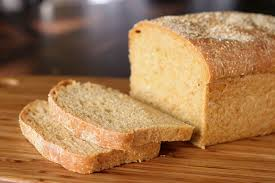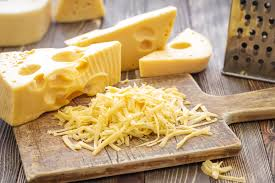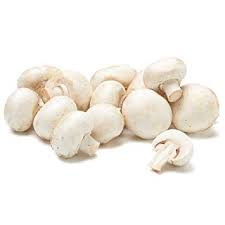Biology > Microbes in Human Welfare > Household Uses of Microbes
Microbes are omnipresent i.e. they exist everywhere: in soil, air, water and also in the human body and the bodies of plants and other animals! They also exist in places where no other life-form exists. Bacteria, fungi, protozoa, viroids are examples of microorganisms. The general presumption is that the microbes are harmful to us because some of them cause diseases to both plants and animals including humans. However, there are many microorganisms, who are useful to us in many ways. In this article, we shall study the use of microbes in household activities.
Edible mushrooms are cultivated and consumed as food worldwide. Algae are used as thickening agents and in ice creams. They are nutritionally important in vegetarian diets. Yeasts are used as a common flavoring agent of food and for food production. Bacteria are used to produce dairy products like cheese and yogurt.
Fermentation:
The process of anaerobic respiration in which the complex molecules incompletely brakes into simple ones by the microbial action is called fermentation. There are many types of fermentation that are distinguished by the end products formed from pyruvate or its derivatives. The two fermentations most commonly used by humans to produce commercial foods are ethanol fermentation (used in beer and bread) and lactic acid fermentation (used to flavor and preserve dairy and vegetables). While there are a number of products from fermentation, the most common are ethanol, lactic acid, carbon dioxide, and hydrogen gas (H2). These products are used commercially in foods, vitamins, pharmaceuticals, or as industrial chemicals.
Fermentation of dough is done for making dosa, idli. CO2 produced in the process gets trapped in gluten and makes idli puffy. Microorganisms involved in the process are Bacillus Candida, Saccharomyces cerevisiae. For making bread the microbe used in Baker‘s yeast (Saccharomyces cerevisiae). Toddy is made from the sap of palm using the process of fermentation.
The products obtained in the dairy industry by microbe activities are cheese, yogurt, buttermilk, paneer. Microbes used are species of Streptomyces, Penicillium, Lactobacillus
Bread Making:

The flour, salt, and yeast are mixed. Then the oil and water are mixed with it. The dough is kneaded until the dough becomes smooth. Then the dough is allowed to ferment overnight. The dough is moulded into balls and put on a baking tray. The oven is preheated to 220˚C and the balls are baked for 25-30 minutes until they turn golden brown, Then they are allowed to cool on wire mesh.
Cheese Making:

The process is used in cheese making (eg. Swiss cheese by Propionibacterium sharmanii, Roquefort cheese by fungi). Different varieties of cheese are known by their characteristic texture, flavour, and taste, the specificity coming from the microbes used. The bacterium Propionibacterium sharmanii is used in ‘Swiss cheese’ to give it its characteristic holes by producing a large amount of carbon dioxide. ‘Roquefort cheese’ is ripened by growing certain fungi on them to give them their specific flavour.
Curd Making:

The increased acidity causes the milk proteins (casein) to tangle into solid masses or curds. Milk that has been left to sour (raw milk alone or pasteurized milk with added lactic acid bacteria) will also naturally produce curds.
A small amount of curd added to the fresh milk as inoculum or starter contains millions of LAB, which at suitable temperatures multiply, thus converting milk to curd. During growth, the LAB produces acids that coagulate and partially digest the milk proteins. The microorganism involved is Lactobacillus Lactic acid Bacteria (LAB). The process increases nutritional value. It checks disease-causing microbes in our stomach. It increases Vitamin B12
Yogurt Making:

Milk contains the sugar lactose. and some bacteria will ferment lactose to produce lactic acid. Yogurt is produced by batch culture, where pasteurized milk has the bacteria Lactobacillus bulgaricus and Streptococcus thermophilus added to it. The mixture is maintained at a temperature of around 40°C. The bacteria will produce lactic acid by respiration, and this lowers the pH. When it reaches a target the product is harvested.
Microbes as the Source of Food:
With the continuous rise in the global population, the demand for food has also increased. The conventional methods of agriculture and animal husbandry are not sufficient to fulfill the nutritional requirements of the growing population. This resulted in malnutrition due to deficiency of protein in food.
Some microbes or their fruiting bodies are directly used as a source of food. The microorganisms utilize the carbon and nitrogen present in these materials and convert them into high-quality proteins which can be used as a supplement in both human and animal feed. They are rich in protein. Single-cell protein (SCP) is the protein extracted, or the cells themselves, from cultivated microbial biomass. The microbes involved are bacteria, fungi, and algae. SCP has high protein content. They can be grown on waste products such as whey, which makes it more of an economically- feasible protein source.
SCP can be obtained from bacteria (Bacillus subtilis), fungi (Candida and Saccharomyces cerevisiae), algae (Chlorella). Bacterial sources of SCP are Pseudomonas fluorescens, Lactobacillus, Bacillus megaterium. The fungal sources of SCP are Aspergillus fumigatus, Aspergillus niger, Rhizopus cyclopean. Yeasts used as source of SCP are Saccharomyces cerevisiae, Candida tropicalis, Candida utilis. The algal sources of SCP are Spirulina sps, Chlorella pyrenoidosa, Chondrus crispus.
Mushrooms:

Fungus like mushrooms and truffles (bacidomycetes) are directly used as food. They are sugar-free, fat-free. They have low-calorie value. They are rich in proteins, vitamins, minerals, and amino acids. Some common edible mushrooms are white button mushroom (Agaricus bisporus), Paddy straw mushroom (Volvariella Volvacea), Oyster mushroom (Pleurotus florida). Toadstools are poisonous mushrooms.
Algae, which include seaweeds and other aquatic plants, contain chlorophyll and require carbon dioxide and continuous sunlight. Those without chlorophyll, particularly yeasts and fungi, show more promise for commercial production.
Next Topic: Industrial Uses of Microbes
